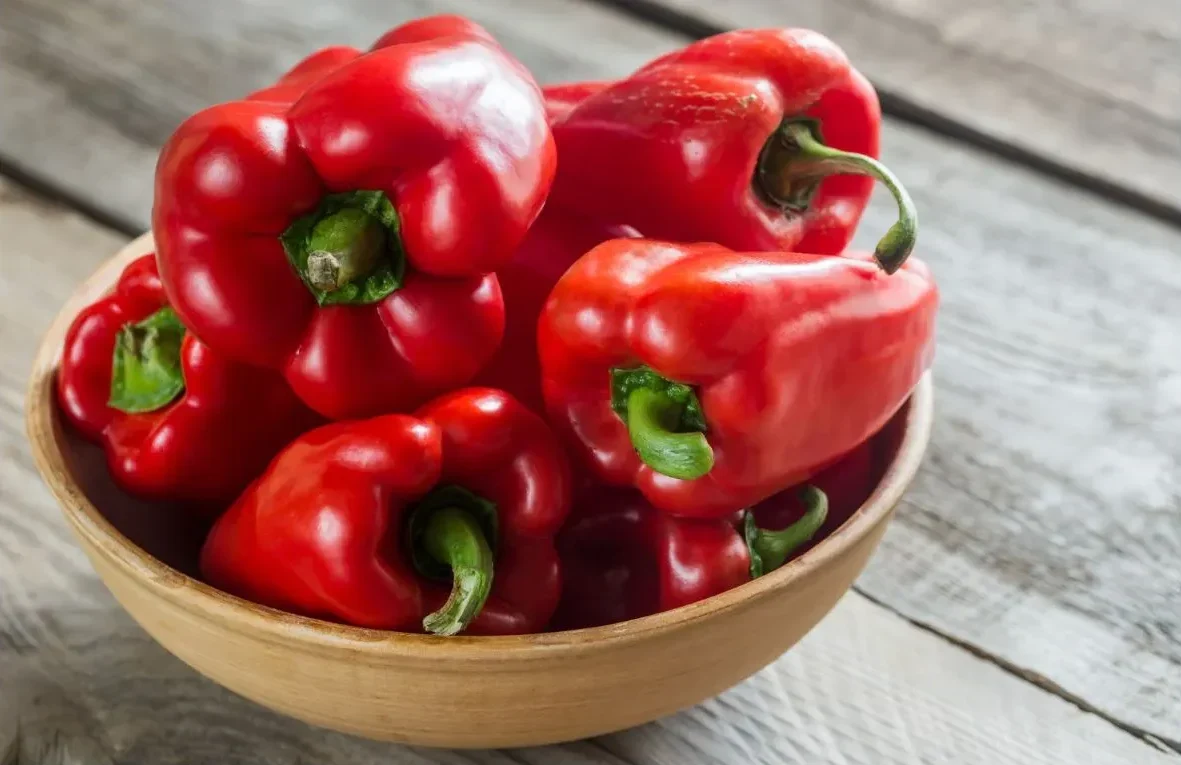If you’re following a low-purine diet or simply curious about the nutritional content of your favorite vegetables, you may have wondered: Are red bell peppers high in purines? This colorful and versatile vegetable is a staple in many kitchens, but how does it fare when it comes to purine content?
Let’s dive into this topic and explore what the research tells us about red bell peppers and purines.
Purines and Their Impact on Health
Before we address whether red bell peppers are high in purines, it’s essential to understand what purines are and why they matter. Purines are naturally occurring substances found in many foods. When broken down in the body, they form uric acid.
For most people, this isn’t a problem, as the body can efficiently process and eliminate uric acid. However, for those with conditions like gout or kidney stones, managing purine intake becomes crucial.
The Purine Content of Vegetables
When it comes to purine content, not all foods are created equal. Generally, animal products, especially organ meats and some seafood, are known to be high in purines. But what about vegetables?
Vegetables and Purine Levels
Most vegetables, including red bell peppers, are considered low-purine foods. This is good news for those managing their purine intake. Vegetables typically contain much lower levels of purines compared to animal-based proteins, making them a safe and healthy choice for most diets.
Are Red Bell Peppers High in Purines?
Red bell peppers are not considered high in purines. They’re among the vegetables that are lowest in purine content.
Purine Content of Red Bell Peppers
While exact measurements can vary depending on growing conditions and other factors, red bell peppers generally contain very low levels of purines.
They fall into the category of foods that are safe to eat in abundance, even for those on a strict low-purine diet.
Nutritional Benefits of Red Bell Peppers
Not only are red bell peppers low in purines, but they also offer a wide array of nutritional benefits. Let’s explore some of the reasons why including red bell peppers in your diet can be a great choice, regardless of your purine concerns.
Rich in Vitamins and Antioxidants
Red bell peppers are an excellent source of vitamin C, providing even more of this essential nutrient than citrus fruits. They’re also packed with other antioxidants, including beta-carotene and lycopene, which contribute to their vibrant red color.
Low in Calories, High in Fiber
For those watching their calorie intake, red bell peppers are a great option. They’re low in calories but high in fiber, making them a filling and nutritious choice.
This combination can be particularly beneficial for weight management, which is often recommended for those dealing with gout or high uric acid levels.
Related Guide: Can Fennel Seeds Cause Anxiety? Exploring the Link Between This Popular Spice and Mental Health (2025)
Incorporating Red Bell Peppers into a Low-Purine Diet
Given that red bell peppers are not high in purines, they can be freely incorporated into a low-purine diet. Here are some ways to enjoy this nutritious vegetable:
- Raw in salads or as a snack with hummus
- Roasted and added to sandwiches or wraps
- Stuffed with low-purine fillings like quinoa and vegetables
- Blended into smoothies for a vitamin boost
- Grilled as a side dish or addition to kebabs
Other Low-Purine Vegetables to Consider
While we’ve established that red bell peppers are not high in purines, it’s worth mentioning other vegetables that are also safe for a low-purine diet. These include:
- Green bell peppers
- Cucumbers
- Carrots
- Lettuce
- Tomatoes
- Zucchini
Including a variety of these vegetables in your diet can help ensure you’re getting a wide range of nutrients while keeping your purine intake low.
Conclusion
Red bell peppers are not only low in purines but also packed with beneficial nutrients. They’re a safe and healthy choice for those managing their purine intake, as well as anyone looking to add more colorful, nutritious vegetables to their diet.
Remember, while red bell peppers and many other vegetables are low in purines, it’s always best to consult with a healthcare professional or registered dietitian when making significant changes to your diet, especially if you have specific health concerns related to purine intake.
By incorporating red bell peppers and other low-purine vegetables into your meals, you can enjoy a diverse, flavorful, and nutritious diet while keeping your purine levels in check. So go ahead and savor those delicious red bell peppers – your taste buds and your body will thank you!



